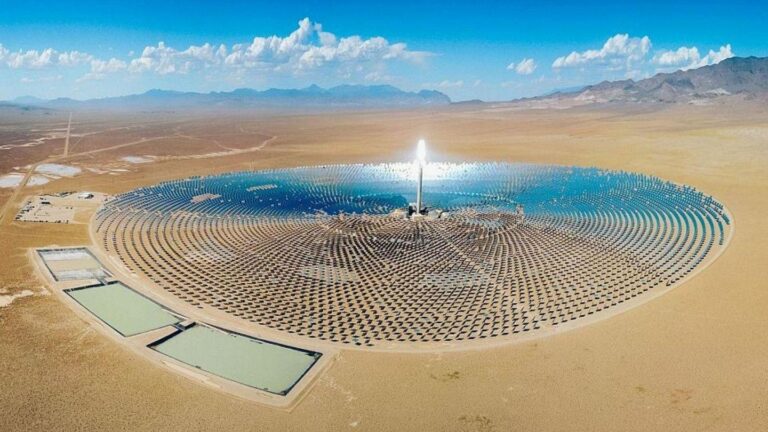China is rapidly advancing construction on what is set to become the world’s largest solar farm, aiming to bolster its renewable energy capacity and meet ambitious emissions reduction goals. As the country faces mounting pressure to curb carbon output and transition away from fossil fuels, this massive solar project underscores Beijing’s commitment to expanding clean energy infrastructure. The initiative reflects China’s strategic push to lead global efforts in combating climate change while sustaining economic growth.
China Accelerates Construction of Mega Solar Farm to Accelerate Carbon Neutrality Goals
China has embarked on an unprecedented renewable energy project, fast-tracking the development of a sprawling solar farm designed to drastically cut its carbon emissions. This ambitious initiative aims to deploy cutting-edge photovoltaic technology across thousands of hectares, positioning the site to become the largest solar installation globally. Officials indicate that the project will not only bolster the country’s renewable energy capacity but also stimulate regional economies by creating thousands of green jobs in construction, operations, and maintenance.
The mega solar farm is expected to contribute significantly to China’s 2060 carbon neutrality goals, supported by government incentives and partnerships with leading clean energy firms. Key features of the project include:
- Advanced bifacial panels to maximize energy capture from both sides
- Grid integration innovations to ensure stability amidst fluctuating solar output
- Energy storage systems for enhanced supply reliability during non-daylight hours
The government projects a generation capacity that could power over 5 million homes annually, underscoring its commitment to pivot away from fossil fuels at an accelerated pace.
| Project Attribute | Details |
|---|---|
| Total Area | 15,000 hectares |
| Expected Capacity | 10 GW |
| Estimated Jobs Created | 12,000 |
| Commissioning Year | 2027 |
Technological Innovations and Environmental Impact of the Largest Solar Project in the World
The construction of the world’s largest solar farm in China marks a significant leap in renewable energy technology, showcasing cutting-edge advancements tailored for efficiency and scale. Leveraging bifacial solar panels, which capture sunlight on both sides, and tracking systems that optimize the angle of solar incidence throughout the day, the project is engineered to maximize energy output even in regions with variable weather conditions. Additionally, the integration of advanced energy storage solutions, including large-scale lithium-ion battery banks, enables the facility to supply a consistent and reliable power flow, reducing dependency on fossil fuels and stabilizing the grid during peak demand periods.
From an environmental perspective, the massive solar installation is expected to deliver substantial benefits while also presenting unique challenges. Key positives include:
- Reduction of over 1.5 million tons of CO2 emissions annually, significantly aiding China’s commitments toward carbon neutrality.
- Minimal water usage compared to conventional power plants, helping alleviate local resource strain in arid regions.
- Creation of green jobs driving sustainable economic growth in nearby communities.
However, concerns remain regarding land use and habitat disruption. To address these, the project has implemented a comprehensive environmental management plan focusing on:
- Restoration of native vegetation surrounding solar arrays.
- Continuous monitoring of local wildlife populations to prevent adverse effects.
- Adaptive land management strategies that balance energy generation with ecosystem preservation.
| Technology | Benefit | Environmental Impact | |
|---|---|---|---|
| Bifacial Solar Panels | Increased energy capture | Lower land footprint | |
| Tracking Systems | Optimized solar incidence angle | Improved efficiency reduces need for additional land | |
| Large-Scale Lithium-Ion Battery Banks | Consistent and reliable power supply | Supports grid stability, enabling higher renewable penetration |
Experts Recommend Strengthening Grid Infrastructure and Policy Support for Sustainable Energy Expansion
To support the rapid expansion of renewable energy like China’s ambitious solar farm project, specialists emphasize the urgent need to modernize and fortify the national grid infrastructure. Current transmission systems face limitations in handling intermittent power sources, causing bottlenecks that hinder efficient energy distribution. Upgrading the grid with advanced technologies, including smart grid applications and energy storage solutions, is critical to ensure stability and maximize the utilization of clean energy.
Policy frameworks also play a pivotal role in accelerating sustainable energy adoption. Experts call for comprehensive reforms that provide:
- Clear incentives for renewable energy investments
- Streamlined approval processes for infrastructure projects
- Flexible regulations to accommodate emerging technologies
- Robust mechanisms for grid integration and demand management
| Key Infrastructure Upgrades | Expected Benefits |
|---|---|
| Energy Storage Systems | Reduce supply fluctuations |
| Smart Grid Technologies | Improve demand-response efficiency |
| High-Voltage Transmission Lines | Expand reach to remote solar farms |
Insights and Conclusions
As China accelerates the construction of the world’s largest solar farm, the endeavor underscores the nation’s commitment to reducing carbon emissions and transitioning toward renewable energy. While challenges remain in balancing rapid development with environmental and economic considerations, this ambitious project marks a significant step in China’s pursuit of its climate goals, signaling a potential shift in the global energy landscape.




